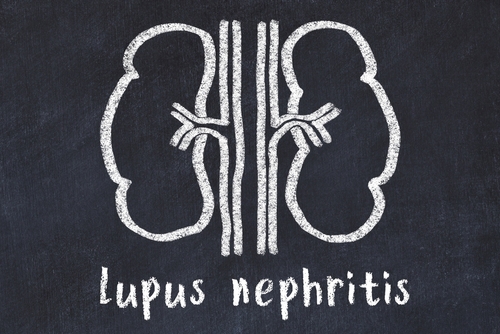
“We found that decisions about timing of dialysis initiation seemed to be shaped by a complex interplay between physicians’ practice styles, acute clinical events that gave urgency to starting dialysis, and the quality of the interactions between patients and their physicians. These care processes often seemed provider-driven, and were often not aligned with the priorities, concerns, and preferences of patients documented in clinical notes. Our findings call attention to the need for stronger efforts to support a more patient-centered approach to decision-making about initiation of dialysis.”
Susan P. Y. Wong, MD
There are few data available to help guide decision-making about the optimal time to initiate maintenance dialysis in individual patients. Maintenance dialysis has been initiated progressively earlier in the course of chronic kidney disease (CKD) over the past decades. While indications for dialysis such as life-threatening electrolyte abnormalities and symptoms of uremia are recognized, there remains uncertainty about the bets time to initiate dialysis.
Previous studies of the association between the timing of dialysis initiation and outcomes have shown contradictory results; most have reported higher mortality when dialysis has begun earlier in the course of CKD or at higher estimated glomerular filtration rate (eGFR). Other studies have reported either no difference or improved survival when dialysis is started earlier.
Those earlier studies focused on associations between eGFR at dialysis initiation and measured patient characteristics and outcomes. The studies did not include factors regarding how the decisions about when to start dialysis were made in clinical practice.
A study that utilized Department of Veterans Affairs (VA) data from a national cohort of patients receiving care through the VA examined patient characteristics at the time of dialysis initiation. From January 1, 2000, to December 31,2009, there was a trend toward earlier dialysis initiation; a trend not explained by changes in clinical indications of advanced CKD or presentation with acute illness around the time of initiation during the same time period.
Researchers led by Susan P. Y. Wong, MD, conducted a post hoc qualitative analysis of the electronic medical records of the cohort to gain a clearer understanding of the impetus behind decisions about timing of dialysis. They reported results of the analysis in JAMA Internal Medicine [2016;176(2):228-235].
A total of 1691 patients initiated dialysis during the study period. Of those, 74.7% (n=1264) initiated dialysis as an inpatient, 72.6% (n=1228) with a hemodialysis catheter. Members of the cohort met with a nephrologist during an outpatient clinic meeting a median of three times in the year before dialysis initiation. Mean eGFR at the time of dialysis initiation was 10.4 mL/min/1.73 m2.
The researchers identified three dominant, overlapping themes relevant to understanding the timing of initiation of dialysis: (1) physician practices; (2) sources of momentum; and (3) patient-physician dynamics.
Physician Practice
Timing of dialysis initiation reflected various physician practices that ranged from those focused on preparing patients for dialysis to those focused on forestalling the need for dialysis with more conservative medical therapies to reverse or halt the loss of renal function and to manage the symptoms of advanced CKD.
Helping patients prepare for dialysis usually involved a series of interdependent steps that included helping patients select a modality of dialysis (hemodialysis or peritoneal dialysis) and securing permanent dialysis access (arteriovenous fistula or graft or peritoneal catheter). It was a challenge to align the timing of patient preparation with the patient’s path of illness. Some patients could transition smoothly to dialysis following completion of the key preparatory steps, but most needed to make the decision to initiate dialysis earlier than anticipated.
In forestalling dialysis, a plan for when dialysis would be initiated was often made based on how patients responded to interventions meant to reverse or halt the loss of kidney function and/or treat symptoms of advanced CKD. There was variation in the time frame used for evaluation of the effects of medical interventions prior to dialysis initiation.
Sources of Momentum
Acute illness was the most obvious source of momentum for dialysis initiation: when a patient experienced a life-threatening illness, physicians saw an urgent need for dialysis, which seemed to supplant the patient’s choice in the matter. Being a hospital inpatient seemed to increase the likelihood of dialysis initiation, even without the presence of urgent clinical indications. When patients with advanced CKD were admitted to the hospital, they were often identified by inpatient healthcare teams as “predialysis” or “approaching dialysis,” and the decision of when to begin dialysis was considered part of the assessment and care plan.
Another source of momentum was the physician’s perceived need to optimize a patient’s clinical status prior to a high-risk procedure such as surgery or angiography. The assumption was that outcomes would be more favorable if dialysis was begun in advance of the procedure.
Patient-Physician Dynamics
The interactions between the physician and the patient seemed to shape the decision regarding timing of dialysis initiation. Patients were sometimes described as being resistant or reluctant to prepare for initiation of dialysis in progress notes. Physicians were concerned about safety and survival, while patients had a wide range of priorities and concerns.
There was rarely documentation of patients’ treatment goals in medical records. When a patient’s goals were documented, they often included an emphasis on quality of life and autonomy. Physicians tended to focus on the perceived hazards of delaying dialysis.
In conclusion, the researchers said, “Our findings offer insight into the complex processes that shape the timing of maintenance dialysis in real-world clinical settings and suggest that there may be opportunities to make these processes more patient centered.”
Takeaway Points
- A recent qualitative analysis of patients who initiated dialysis between 2000 and 2009 was conducted to provide a clearer understanding of the factors that influenced the timing of dialysis initiation.
- Three processes were identified: physician practices; sources of momentum; and patient-physician dynamics.
- Analysis results suggest opportunities to improve communication between patients and physicians.







 © 2025 Mashup Media, LLC, a Formedics Property. All Rights Reserved.
© 2025 Mashup Media, LLC, a Formedics Property. All Rights Reserved.